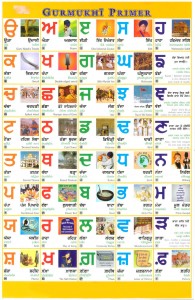
Over a year ago, Ajmer Singh Hothi was found shot dead inside a semi-truck that he had just bought and was still making payments on. Only a day before, he had changed his phone number and gotten a restraining order against his ex-girlfriend and her father. [link]
 More information surrounding the case has recently became available since 553 pages of court records from a grand jury hearing have become public.
More information surrounding the case has recently became available since 553 pages of court records from a grand jury hearing have become public.
A prosecutor accuses Gurparkash Khalsa of being driven by humiliation over his daughter’s soiled reputation to the point of ambushing Hothi in a big rig parked east of Stockton. The 56-year-old now sits in a jail cell charged with capital murder… Details of the case recently became public when San Joaquin County Superior Court Judge Charlotte Orcutt unsealed the 553-page transcripts of a four-day grand jury hearing that ended with Khalsa’s April 25 indictment. He was arrested hours later. [link]
The events that led to Ajmer’s death began with a relationship between Hothi and Khalsa’s daughter.
It began in November 2004, when a secret romance sparked between Hothi and Khalsa’s daughter, Kiranjot Pannu, then age 17. The lovers kept it quiet because Hothi was a lowly trucker, while her father owned Pacific Coast Intermodal in French Camp. Hothi’s father, also a trucker, once worked for Khalsa and feared him, according to Hothi’s sister, Kiranjit Hothi, who testified before the grand jury. [link]
Khalsa forbade the romance and Hothi’s parents sent Ajmer to India for an arranged marriage. But then Khalsa heard rumors that Hothi had gotten his daughter pregnant, and that she’d had an abortion. The angry father then demanded that Hothi marry his daughter. He followed Ajmer to India and tried to have him divorced. It seems that he was unsuccessful, and word of his attempt traveled back to Stockton where Khalsa felt humiliated in the eyes of the community. [link]
Guest blogged by Mewa Singh
I did not think I was going to write this post, but after seeing a post on the most popular South Asian American blog – Sepia Mutiny – by Amardeep Singh, I had to make a comment about Musharraf’s resignation to avoid impeachment.
For a quick primer on the career of the Pakistani dictator – Pervez Musharraf, watch the Al-Jazeera video:

Young Sikhs are extremely internet savvy. From the proliferation of videos on youtube to remixed dhadhi-jatha to an embrace of web 2.0, many young Sikhs are at the forefront of creating new avenues for education about their faith. While I personally believe that most Sikhs focus their attention on education for non-Sikhs, in my opinion, far more crucial is the intra-Sikh education.
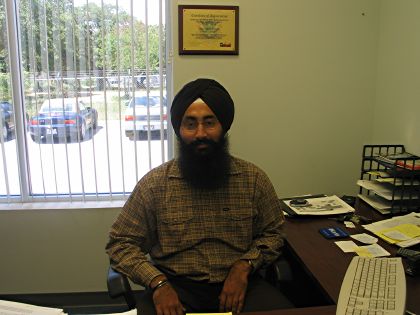 While in an earlier discussion I talked about the importance of the KhalsaKids website, launched last year by the Sikh Coalition. It is an example of Sikhs experimenting with new media forms to better address the needs and concerns of their community.
While in an earlier discussion I talked about the importance of the KhalsaKids website, launched last year by the Sikh Coalition. It is an example of Sikhs experimenting with new media forms to better address the needs and concerns of their community.
In a similar vein, the Sikh Research Institute has recently announced its plans for a “webinar” series, titled “Liv.”
Explaining the impulse of this new project, SikhRI head, Harinder Singh, states:
“We are regularly in touch with Sikh communities in North America, Europe and Asia who want us to deliver programs in their local communities on a regular basis, but it’s been quite difficult due to logistical and financial constraints. Now that we are introducing webinar facilities, our programs can reach anyone around the globe and we look forward to being able to engage with the vast Sikh communities outside of our traditional target area in North America”[link]
The “Liv” project entails four 90 minute seminars to begin at 8am PST (California time) on 4 consecutive Saturdays, beginning September 13, 2008. The first four topics listed on their website includes: “Sikhi – A Gurmat Framework,” “Bani – The Idea,” “Tavarikh (History) – The Revolution,” and “Rahit – The Lifestyle.”
A pre-registration is required to participate in the “webinar” and can be completed here.
While waking up at 8am on Saturdays is beyond my abilities, the seminars being conducted by The Harinder Singh sound intriguing and informative. I hope some of our readers can that do participate can discuss some of their thoughts on the format and the content here.
Also what are new ways that you have seen Sikhs embracing Web 2.0? (yes I am already aware of that one blog, uhhh but I can’t think of the name.)
At one time Punjab Agricultural University (PAU) in Ludhiana, Punjab was THE agricultural university in Asia. Largely due to this university’s role in promoting the Green Revolution (fellow Langa(w)r-iters have described the Green Revolution’s darker sides, another monograph is by Vandana Shiva), students from throughout East Asia came to Ludhiana to study at PAU. In California, I have always been surprised to randomly meet some Chinese men that know Punjabi. However, here is an impressive Malaysian-Chinese man Kian You (AKA Karam Singh) that will leave your mouth wide open. He discusses the importance of continuing the Punjabi language and can even recite the first Pauri of Japji Sahib. On this Friday as many of us tune in to watch the Olympics in China, take a few minutes to watch this video of an ethnically Chinese man teach us about our maboli.
While the young Sikh filmmakers are probably preparing for the annual Sikhnet Youth Film Festival (have you seen their ad on satellite television, it is very impressive!), I recently came across some internet announcements for a list of fascinating Canadian-produced short films that I hope will galvanize future discussions.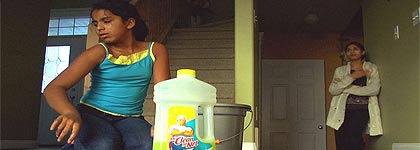
Although I must confess, at this point, I have NOT seen any of them, still, I wanted to highlight them and hear back from the Langa(r)eaders about their thoughts. Hopefully some of our more vocal Canadian Langa(r)eaders will give us first voice about the films: P.Singh, yes even kaptaan, and others.
Me, Masi, and Mr. Clean
The description from the film’s website is quite poignant:
Eleven year old Seema has issues with her skin colour. Surrounded by the white kids of her community, and inundated by her masi’s (aunt) opinion that fair skin is better, Seema resorts to drastic measures to bleach her skin.
Seema mistakenly believed that using Mr. Clean on her skin will lead to a fairer, more beautiful colour. When Seema ends up in the hospital an unsuspecting character helps her understand skin colour isn’t what defines the person – it’s what’s beneath that counts[link]
Everyone seems to be searching for it online. The Langar Hall got it first. So, for those of you that missed the opening ceremonies of the Olympics, here is a picture of the Punjabi Sikh field hockey players on the 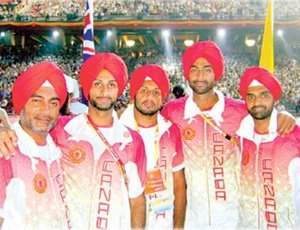 Canadian field hockey team with their pagris (turbans). Pictured from left to right: Assistant Coach Nick Sandhu, Bindi Kullar, Sukhwinder Gabbar Singh, Ravi Kahlon, and Ranjeev Deol.
Canadian field hockey team with their pagris (turbans). Pictured from left to right: Assistant Coach Nick Sandhu, Bindi Kullar, Sukhwinder Gabbar Singh, Ravi Kahlon, and Ranjeev Deol.
For previous coverage of the Canadian Field Hockey Team on The Langar Hall see:
Canadian Field Hockey – individual biographies
Sikhs in the Olympics, Beijing 2008 – for a discussion of their turban-wearing decision
Recent Results:
The team lost their first game against the #1 ranked Australians. They will be playing Pakistan next on Day 5 (Wednesday) at 6am EST. Pakistan lost their first match to Great Britain.
In light of the recent post on Punjabi classes in California high schools, I ran into this article in the Chronicle Herald about Sikh summer school:
A couple of years ago Aman Tut’s seven-year-old daughter asked her if she could wear a Christian cross. Tut was surprised because she and her husband are Sikhs… So they enrolled their girls in summer school at the Golden Triangle Sikh Association temple near Petersburg, just west of Kitchener.
The Tut family works weekends and isn’t able to attend the weekly Sunday services and school programs at their gurdwara. The local gurdwaras have come up with a really interesting model to augment their typical “Sunday school” courses.
Four years ago, organizers started a weekday program that runs from 4 p.m. to about 9 p.m. each day. Unlike most vacation Bible school programs that run for a week or two at many churches, kids attend the Sikh program from early July to the end of August… At the beginning of each class, about a dozen students take music lessons on instruments that are used during Sikh worship services. The boys learn to beat rhythms on tabla drums, and girls are taught the basics of the harmonium, an instrument resembling both a tabletop organ and an accordion. By 5 p.m. the majority of students have arrived for classes in Punjabi language, Sikh history and religion.
I don’t know if, as an adult, I would be able to make it to a class every day, but I really liked how the organization had set up their summer school classes, and I wonder if it could be extended or expanded into a “night classes” model for adults during the rest of the year, as well. It seems like a really helpful and interesting alternative to Sikh youth camps, which are often too short or lack enough context to help kids build long-term knowledge and skills. It also has the added benefit of being close to parents who may be concerned about sending their kids away but still want them to benefit from a religious education. What do you think, readers? Between high school programs and night courses, what model of instruction (and time commitment) would work for you, individually, and possibly for your child?
Is the tipping point (the level at which the momentum for change becomes unstoppable) approaching for a change in attitudes towards the value of women and need to have sons?
There has been a widespread, public movement condemning sex-selection by the government, ngos, and others in the community for some time now (this hard-hitting song by Sarabjit Cheema is a must-see). Since Amartya Sen’s articulation of ‘missing women,’ the rights of women in developing countries have been at the forefront of international agendas. In a recent development, Sunita Rao, an Indian pop singer, has released a song condemning sex-selective abortion and become the spokesperson for the LAADLI campaign, funded by the United Nations Population Fund.
Suneeta Rao’s latest album WAQT’s press conference was held in Hotel Palace Heights, New Delhi. It was on behalf of United Nations Population Fund (UNFPA). The singer is the official spokesperson of the Laadli campaign of UNFPA that focuses on the pleasure and pride of having a daughter and motivates people to fight injustice against the girl child. ‘The video of the first song in my album ‘Sun Zara’ is a dedication to all girls, Suneeta said, UNFPA has gratefully supported in making the video of this album. According to United Nations Population Fund, “This video has been made for the Girl Child, to address the issue of Sex Selection and to help stop female feticide”. [link]
The song mentioned above, Sun Zara:
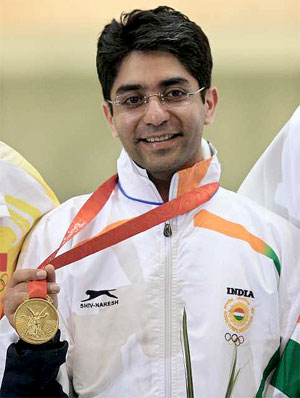 Today Abhinav Bindra won the first individual gold medal ever claimed by any Indian Olympian. He competed in and won the 10M air rifle event this morning in Beijing. We originally posted about him a few days ago here.
Today Abhinav Bindra won the first individual gold medal ever claimed by any Indian Olympian. He competed in and won the 10M air rifle event this morning in Beijing. We originally posted about him a few days ago here.
Abhivan hails from Chandigarh, Punjab and is the son of Dr. A.S. Bindra and Babli Bindra. Abhivan has been training since childhood as a shooter and is a holder of the Khel Ratan Award, India’s highest athletic honor. This is his second time at the Olympics.
His family had gathered at the Sector 8 Gurdwara in the three days preceding his competition for an Akhand patth sahib thanking Waheguru for his success and praying for a win. After hearing that his son had won the gold, Dr. A.S. Bindra proclaimed:
My son has proved that ‘Singh is King’ in a real sense. He has brought laurels for the whole Sikh community and for the whole nation…
——-
As an aside – for those of you wondering, as I was, what his name means – it means “quite new”
Also just found a link to Abhinav’s personal blog
Langa(w)riters have posted in the past on issues surrounding the preservation of the Panjabi language here, here, and here. Be it anywhere from Panjab to North America, the preservation of the Panjabi language is intimately tied to the preservation of a Panjabi and Sikh heritage. For example, in a recent article on Live Oaks High School offering Panjabi courses, Mohinder Singh Ghag, director of Live Oaks Schools Foundation stated:
“The language is the only reason we have a link to our ancestors.”
Thus, the discussion around solutions has understandably centered around learning Panjabi in homes, gurdwaras, high schools and universities. I personally think having these learning opportunities available at all these different sites is a much-needed step towards maintaining the Panjabi language. I have always found the process of getting Panjabi classes taught in high schools particularly interesting because of how they require engaging the community, the reasons for creating them, and how they are incorporated into the public K-12 educational system.
For example, commendably in Live Oaks, California (located about 10 miles north of Yuba City, California):
Punjabi community members knocked on doors and made announcements in temples to get teenagers to sign a petition expressing interest in a Punjabi language class at Live Oak High School.
About 25 students signed-up.
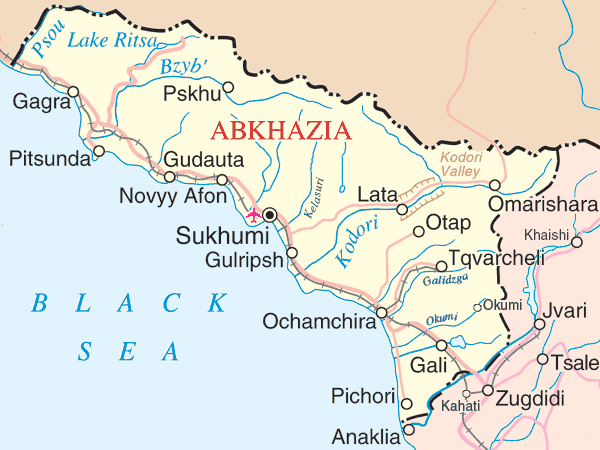
Like many, my family and I watched the opening ceremonies of the Olympics last night. In the middle of the parade of nations, the commentators off-handedly remarked that the country of Georgia had just been invaded by Russia, over an escalated territorial dispute (note that this region of the former-USSR has been the stage for other battles over nation and territory; the Chechen Republic is a close neighbor of Georgia on its northern border). Russia has launched a full military campaign involving air and ground troops and targeting the Georgian city of Gori (not located in the disputed region); this has already resulted in civilian injuries and deaths. Georgia has also asked for U.S. assistance in airlifting their troops from Iraq back home.
I can’t confess to know the entire back story; I’m terribly unfamiliar with Abkhazia and had no idea that hostilities had been mounting (beyond the “normal” level) between Georgia and Russia. In reading the NYT coverage this morning, I stumbled across this statement:
Georgian officials said their only way out of the conflict was for the United States to step in, but with American military intervention unlikely, they were hoping for the West to exert diplomatic pressure to stop the Russian attacks.
As familiar as I am with realpolitik, I was alarmed that the only “hope” for stabilization or a stop to the assault was U.S. intervention. This made me reflect on the concept of witness: in times of war, what does it mean to bear witness to an atrocity, but fail to intervene? In times of “peace,” what does it mean to acknowledge that human rights abuses take place, but fail to challenge a system that prioritizes compliance? What does our faith require in these moments? In these moments, what is justice, and what is our duty as a faith community that values justice and freedom?
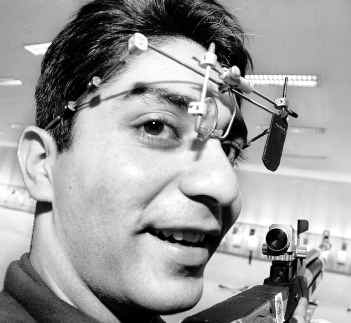 Abhinav Bindra was considered a child prodigy, but has had limited success on the largest competitive stages. Still he is considered a medal hopeful.
Abhinav Bindra was considered a child prodigy, but has had limited success on the largest competitive stages. Still he is considered a medal hopeful.
Bindra will be competing in the 10m air rifle competition. Qualifications and the finale will all be on Day 3 (Monday, August 11, 2008) in the afternoon
In these commentary posts, I will be republishing my original writings as well as include pictures of the athletes and the timings of their events.
There will be four Canadian field hockey athletes that come from Punjabi Sikh backgrounds on this year’s Canadian Olympics Team. Our Sikh community’s fearless foursome will all be wearing turbans (pagris) during the Opening Day Ceremonies.
So today will mark the opening of the Olympic Games. Some will cheer for their states; some will cheer for their heroes; some won’t care.
Well, here are FOURTEEN reasons to care: reasons that transcends national barriers and in many ways is more reflective of our Sikh-centered, globalized outlook. It is related to the fact that Sikhs from throughout the world congregate here at The Langar Hall and that issues ranging from Kenya, New Zealand, Canada, Panjab, England etc. all interest us
So in this spirit of continuing to foster a globalized Sikh diasporic community, I present to you the untold story of Punjabi Sikhs in the Olympics. The reason I am using the term ‘Punjabi Sikh’ is because I don’t really know how they identify themselves, but their names indicate that they come from a common ethnic stock – a Punjabi Sikh background.
I am trying to make this list comprehensive, so if I left anyone out, please feel free to post a comment and I will go back to add them. Let’s make this a project we do together, by posting their finishings and results. [also thank you to Mandeep Singh for correcting some of my mistakes]
Sikhs in the Olympics:
Sikhs are one of those great unknown Olympic stories. It is a diasporic story where Sikhs have representeed many countries and many continents. In the Beijing Olympics, there will be Sikhs (on as far as I could figure out using the wikipedia lists) coming from India and Canada. In years past, Sikhs have been included on teams from Kenya, Great Britain, and even Malaysia. From the regions of the five Olympic Rings (Blue – Europe, Yellow – Asia, Black – Africa, Green – Oceania, Red – Americas), Sikhs, including those in the diaspora have been at the center of many Gold medal winning teams – especially in field hockey. As far as individual glory, Milkha Singh “the Flying Sikh” disappointing fourth place finish in the Men’s 400M in the 1960 Rome Olympics.
In a recent post, Camille asked important questions around growing Sikh female leadership/representation, rather than just “managing” it. At the heart of leadership in any organization is decision-making. A critical component of growing Sikh female-leadership/representation is giving access to decision-making spaces that are commonly occupied by Sikh men and incorporating female perspectives into decision-making. Thus, you will see the strongest battles for gender equity in Sikh organizations tend to be fought around decision-making power. A recent example of such a battle was at a Gurdwara in Bristol, U.K. where two factions were fighting over allowing women to take part in Gurdwara elections. Women were demanding the right to vote while also running for committee-member seats. This past Sunday during Gurdwara management-committee elections, both factions broke out into a riot over allowing 79 women to vote past the registration deadline.
According to the Daily Mail:
Six riot vans were dispatched to close the road in Fishponds, Bristol, and one man was arrested and cautioned for a public order offence during the seven-hour stand-off.
Voting finally finished at 4pm and resulted in three women being voted onto the management committee for the first time in the temple’s history.
The trigger for the riot was when one man frustrated by the situation started trouble inside the Gurdwara that spilled out onto the street where “women were blocking his car and trying to push it over while he was still inside clinging to the steering wheel”.
An elderly women at the site reported “… a crowd of mainly women and children stood on one side of the road and men on the other. They were fronting each other up and shouting abuse across the road. The women were screaming ‘we’re not going anywhere’.
In case you’ve missed the front page of every major newspaper in the past few days, nearly 150 people died in a stampede in the Naina Devi temple in Himachal Pradesh. (As great of a tragedy as this is, I’m not sure why it’s front page on American newspapers, considering that incidents of this nature occur all too often in India.)
Religious pilgrims were trampled to death on a hillside on Sunday morning, after rumors of a
landslide sparked a stampede, local officials said. Thousands of Hindu pilgrims traveled to Naina Devi, a hilltop temple in the state of Himachal Pradesh, on Sunday during a festival celebrating the Hindu mother goddess. Heavy rains in the morning led many to take cover in a shelter, local officials said. Some eyewitnesses said visitors on their way down the hill claimed large stones began sliding down the hillside, leading to panic in the crowd below, while others heard rumors of a bomb. [link]
In addition to the stampede, deaths were caused by lack of required medical care.
Local clinics were overwhelmed by the injuries and ran short of medicines and supplies. [link]
During this time of tragedy, the Sikh community came together through kar sewa to assist with the bodies when the government failed to arrange transportation for the bodies. Kar sewaks also organized and served langar and cha to the grieving relatives of the deceased who were camping at the evacuation site.
I recently ran across Relocating Gender in Sikh History by Doris R. Jakobsh who is now an Assistant Professor of Religion at the University of Waterloo. I’m not a scholar of either Sikh history (and Jakobsh shouldn’t be considered one until she can read and understand Gurbani), and the ideas presented below are just fodder for discussion – not being put forth as any authoritative data.
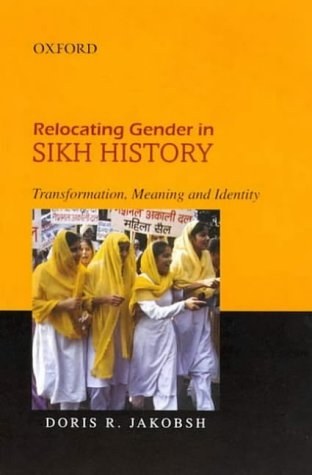 The framework she uses notes the difference between the prescribed Sikh belief of equality amongst Sikh women and men, and what is actually practiced within the Sikh community, claiming that gender has generally been dealt with in 1 of 4 ways: silence, negation, accommodation, idealization.
The framework she uses notes the difference between the prescribed Sikh belief of equality amongst Sikh women and men, and what is actually practiced within the Sikh community, claiming that gender has generally been dealt with in 1 of 4 ways: silence, negation, accommodation, idealization.
One of the biggest problems that I noted when reading the book is her use of English translations of Gurbani for her basis of analysis. We’ve discussed before the problems that we, as Sikh practitioners, experience in understanding Gurbani, due to language barriers. Yet, she bases her research on translations that are subject to the same barriers and misunderstandings. Because of this language barrier, her reading of Gurbani is way off. Despite this, I do believe her feminist analysis of historical writing warrants discussion.
1- Silence: Jakobsh claims that silence is the guiding principle regarding women in Sikh history. Traditional recording of history focuses on politics and economics, realms that women have not been well represented. Women have also not been the authors of their own history, and so the specific questions asked have been those of interest to male historians.
 Although a semi-frequent traveler to Canada, I must admit I have never been to the city of Vernon. I have been to the city Mt. Vernon in Ohio. Not a pretty place.
Although a semi-frequent traveler to Canada, I must admit I have never been to the city of Vernon. I have been to the city Mt. Vernon in Ohio. Not a pretty place.
Well in a week that saw the tragic death of Ishmeet Singh and the triumphant victory of Sarika Singh in the UK, I found a personal obituary of note through Google News.
It seems this past week, the Sikh community saw the passing of a “Good Citizen That Made A Difference,” Satwant Singh Dhindsa. His popularity and his commitment to service are expressed in the article.
Ishmeet Singh, the winner of the “Voice of India” contest, passed away today after drowning in a hotel swimming pool in the Maldives. He was the only son of his parents, and was set to perform at an event in Maldives capital. Such a tragic story and such a great loss for the Punjabi community.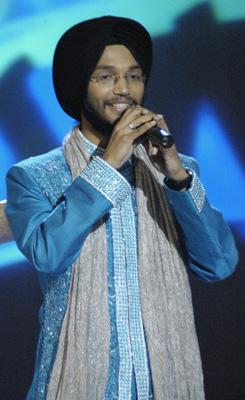 Ishmeet had been vocal about his intent to encourage Sikh youth to step out of the shadows and achieve their dreams.
Ishmeet had been vocal about his intent to encourage Sikh youth to step out of the shadows and achieve their dreams.
This talented Sikh turned out to be very humble, polite, and caring. His idea on winning rested in the ultimate sense to have faith in Waheguru wholeheartedly. He is an idol to many young Sikhs all around the world and he can inspire and motivate young Sikh men and women to succeed in life without compromising their values and traditions under any pressure whatsoever. While interviewing him, he very clearly said to me that in future he would do everything in his power to help Sikh youth with talent to step out of the shadow.
His Shabad Kirtan CD had just been released and many were hoping to see the beginning of a wonderful journey for Ishmeet. He will be greatly missed.
Previous Coverage of Ishmeet on the Langar Hall:
We’re continuing our coverage on Snoop Dogg in Bollywood. And now, we’re joined by the New York Times. Some may grimace at the thought of Snoop promoting Sikhs, but he’s definitely bringing us a LOT of exposure these days. 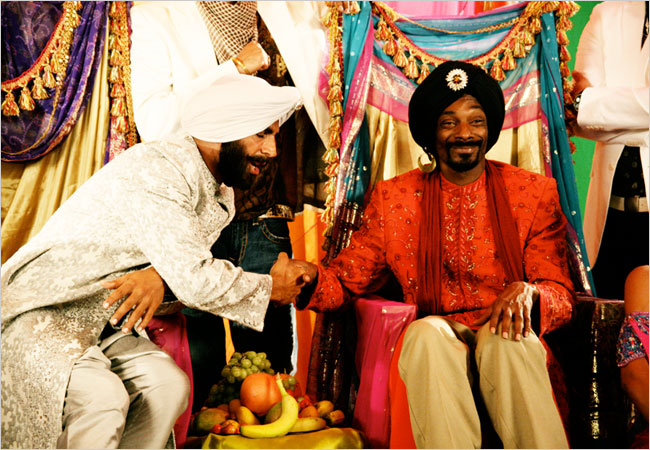
Snoop Dogg wears a Sikh turban and an ornate long coat called a sherwani in a video of the title song, which was shot this year in Chicago… “I really dig how much music is infused with the movies” in Bollywood, Snoop Dogg said in an e-mailed response to questions. “Lots of hip-hop tracks sample Indian music, and a lot of their music sounds like it was influenced by hip-hop,” he said. “We’re putting together something real big” in India, that will include collaborations, live shows and “more movies with some of my Bollywood homies.” [link]
Mewa Singh predicted that Snoop’s collaborative song with Bollywood would become the hottest new track with bhangra teams and Punjabis in the diaspora. It’s already taking over the airwaves in India, which is sort of a break through since hip hop has only been popular amongst the young, urban crowd there until now.
“I’m coming to take over Bollywood,” Snoop Dogg promised during the video shoot. “I’ve never been able to come over there and do shows for you all, but now I’m going to come and do shows,” he said in a clip that the video’s promoters put on YouTube. “This is just the beginning.” [link]
Ever wondered what Snoop thinks of you?

